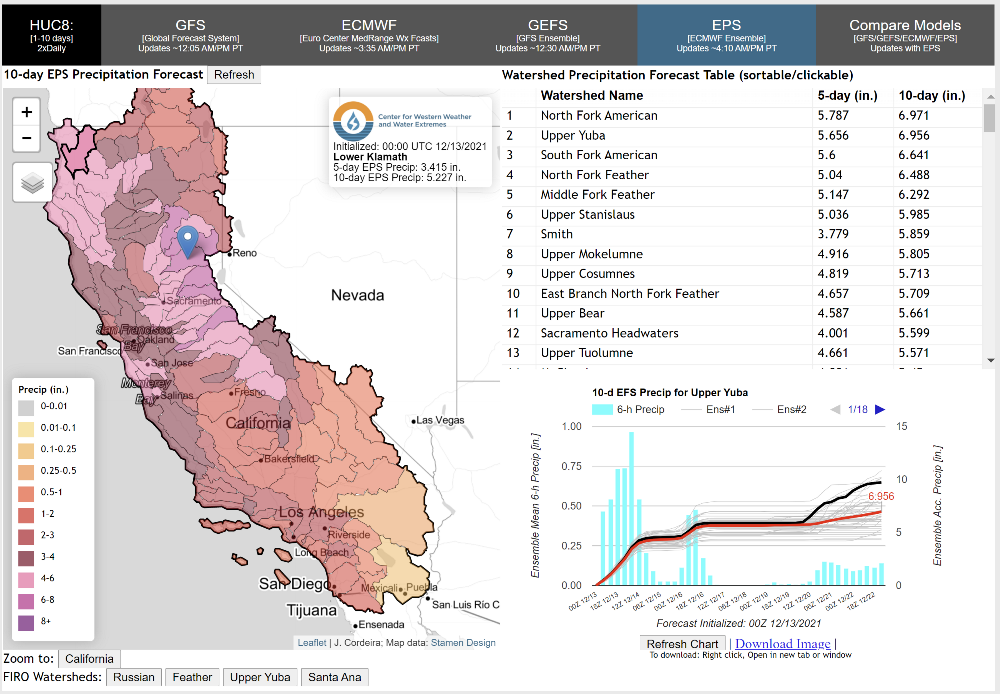The San Diego County Water Authority and the Metropolitan Water District of Southern California have reached an agreement that will provide water to parts of Southern California facing extraordinary supply constraints due to cutbacks on the State Water Project.
Under a deal approved today by Metropolitan’s Board of Directors and previously authorized by the San Diego County Water Authority’s Board of Directors, Metropolitan will secure additional groundwater in 2022 from the Semitropic Water Bank in Kern County. Metropolitan can use that water to serve areas in the northwest and northeast parts of its service area that aren’t connected to its Colorado River supplies and are heavily reliant on limited State Water Project supplies.
“Metropolitan is committed to doing everything we can to bring more water to communities in our service area that are particularly challenged by the drought. We’re thrilled to have the Water Authority partner with us in this effort, supporting the well-being of all Southern California,” said Metropolitan board chairwoman Gloria D. Gray. “We’re all in this together. And we all need to do our part, including using water as efficiently as possible.”
Water Authority Board Chair Gary Croucher expressed a similar perspective. “We thank Metropolitan Board Chair Gloria Gray and General Manager Adel Hagekhalil for partnering with us in a way that benefits all of Southern California,” Croucher said. “We expect that this will be the first of many innovative and collaborative solutions with Metropolitan to sustain our collective economy and quality of life.”
Under terms of the agreement, Metropolitan will purchase 4,200 acre-feet of the Water Authority’s reserves in the Semitropic Original Water Bank in 2022 for $893 per acre foot. Metropolitan also will lease an additional 5,000 acre-feet of “take capacity” from the Water Authority’s water bank account.
Take capacity – a function of groundwater pumping and distribution system size – gives Metropolitan the ability to withdraw more of its own groundwater stored in the Semitropic Water Bank. An acre-foot is 326,000 gallons, enough to serve about three typical Southern California homes for a year.
In 2008, the Water Authority secured supplies in the Semitropic Water Bank for the San Diego region in preparation for drought. Due to other supply and storage investments and sustained water conservation in San Diego County, the Water Authority does not need to tap its Semitropic account to meet the region’s projected water demands in 2022, providing an opportunity to make that water available to other parts of the state.
Water years 2020 and 2021 were the driest two-year sequence on record in California. And in August, Lake Oroville – the main reservoir on the State Water Project – reached its lowest point since being filled in the 1970s. Earlier this month, the state announced that if hydrologic conditions don’t improve, State Water Project deliveries next year would be limited to only what is required to ensure the health and safety of residents, and no water would be delivered under the normal allocation system. Access to the Semitropic Water Bank is important because it is strategically located along the California Aqueduct and can supplement the limited state project deliveries.
Much of Southern California can rely on a diverse portfolio of Colorado River water, local supplies and stored reserves, when state project supplies are limited. However, parts of Metropolitan’s service area – including communities in Northern L.A. County, Ventura County and San Bernardino County – cannot receive Colorado River water and are more dependent on state project supplies. Metropolitan has taken important steps to modify its delivery infrastructure to shrink this dependent area.
The agency also continues to promote increased water efficiency across Southern California. Metropolitan’s board declared a Water Supply Alert in August and a Drought Emergency in November, both calling for increased conservation. The board also approved a series of measures to expand rebate and water-efficiency programs. Depending on local conditions, some Metropolitan member agencies have implemented mandatory conservation measures.
(Editor’s Note: The Metropolitan Water District of Southern California is a state-established cooperative that delivers water to 26 member agencies serving 19 million people in six counties. The district imports water from the Colorado River and Northern California to supplement local supplies, and helps develop increased water conservation, recycling, storage and other resource-management programs.

The San Diego County Water Authority sustains a $253 billion regional economy and the quality of life for 3.3 million residents through a multi-decade water supply diversification plan, major infrastructure investments and forward-thinking policies that promote fiscal and environmental responsibility. A public agency created in 1944, the Water Authority delivers wholesale water supplies to 24 retail water providers, including cities, special districts and a military base.)






